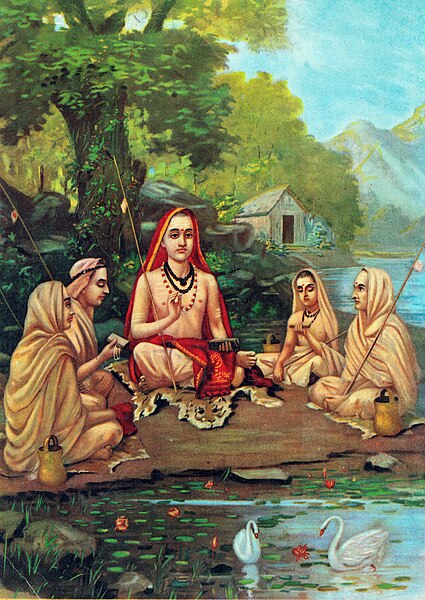A gurukul or gurukulam is a type of education system in ancient India with shishya living near or with the guru in the same house for a period of time where they learn and get educated by their guru. Tradition by contrast, the word Guru has a very restricted use and not generally applied to individual teachers, while the institution of Gurdwara has a major social role instead of a monastic one.) The word gurukula is a combination of the Sanskrit words guru and kula. The term is also used today to refer to residential monasteries or schools operated by modern gurus. The proper plural of the term is gurukulam, though gurukuls is also used in English and some other European languages.
Guru teaching students in a gurukul
Arya Samaj Gurukul School boys performing Homa ritual (1915)
Guru is a Sanskrit term for a "mentor, guide, expert, or master" of certain knowledge or field. In pan-Indian traditions, a guru is more than a teacher: traditionally, the guru is a reverential figure to the disciple or student, with the guru serving as a "counselor, who helps mold values, shares experiential knowledge as much as literal knowledge, an exemplar in life, an inspirational source and who helps in the spiritual evolution of a student". Whatever language it is written in, Judith Simmer-Brown says that a tantric spiritual text is often codified in an obscure twilight language so that it cannot be understood by anyone without the verbal explanation of a qualified teacher, the guru. A guru is also one's spiritual guide, who helps one to discover the same potentialities that the guru has already realized.
The traditional guru–disciple relationship. Watercolour, Punjab Hills, India, 1740.
Adi Shankara with Disciples, by Raja Ravi Varma (1904)
Guru teaching students in a gurukul




